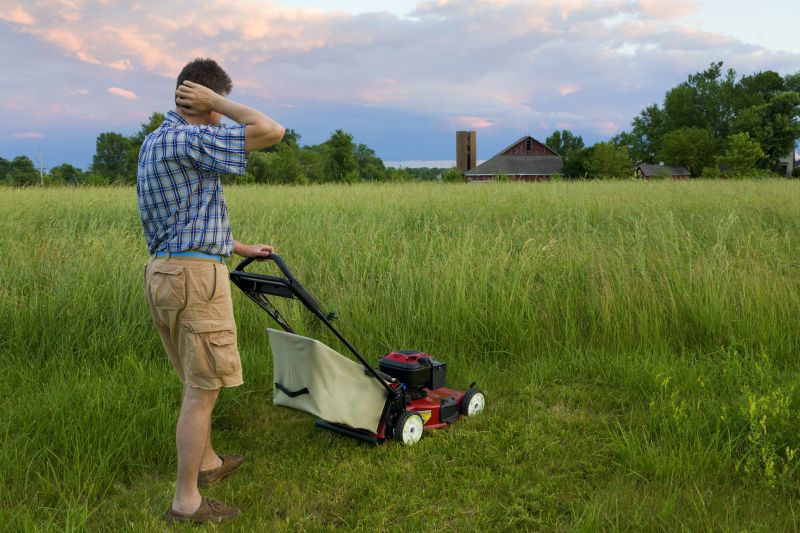Leading-Edge Products For Field And Pasture Mowings Efficiency
Equip yourself with innovative mowing solutions designed to improve efficiency and reduce downtime during large-scale pasture work.
 Field and pasture mowings are essential activities for maintaining healthy, manageable land for agricultural, livestock, or recreational purposes. The right equipment ensures efficient cutting, reduces manual labor, and promotes healthy regrowth of grasses and forage plants. From traditional manual tools to advanced powered machinery, there is a wide array of products designed to meet different needs and land sizes. Proper selection of mowing equipment can streamline operations, improve safety, and enhance the overall quality of pasture management.
Field and pasture mowings are essential activities for maintaining healthy, manageable land for agricultural, livestock, or recreational purposes. The right equipment ensures efficient cutting, reduces manual labor, and promotes healthy regrowth of grasses and forage plants. From traditional manual tools to advanced powered machinery, there is a wide array of products designed to meet different needs and land sizes. Proper selection of mowing equipment can streamline operations, improve safety, and enhance the overall quality of pasture management.
Top Overall Option
All-Purpose Mowing Equipment
An all-purpose mowing solution combines versatility, durability, and ease of use, making it suitable for a variety of pasture and field conditions. It typically features adjustable cutting heights, multiple blade options, and compatibility with various attachments. Such equipment can handle different grass types and terrain complexities, providing a reliable choice for landowners seeking a comprehensive mowing tool. Its adaptability makes it a practical investment for ongoing pasture maintenance.
Types of Products For Field And Pasture Mowings
Push Lawn Mowers
Manual push mowers are suitable for small, flat areas and offer precise control for delicate grasses.
Riding Mowers
Riding mowers provide comfort and efficiency for larger fields, reducing fatigue during extended mowing sessions.
Tractor-Mounted Mowers
Designed to attach to tractors, these mowers cover extensive areas quickly and are ideal for large-scale pasture management.
Brush Cutters
Heavy-duty tools capable of clearing thick grass, weeds, and overgrown areas with ease.
String Trimmers
Lightweight and maneuverable, ideal for trimming edges and hard-to-reach spots.
Scythe and Sickle Tools
Traditional hand tools suited for small patches or precise cutting in tight spaces.
String-Driven Rotary Cutters
Attachable to ATVs or small tractors, these cutters are versatile for different terrains.
Flail Mowers
Ideal for uneven terrain and overgrown areas, providing a thorough cut with minimal clogging.
Mulching Attachments
Specialized blades that chop cut grass into fine mulch, promoting soil health.
Grass Catchers
Add-on accessories that collect cut grass for easier disposal or composting.
Pull-Behind Rotary Cutters
Towed behind vehicles, these cutters are suitable for large fields and rough terrain.
Battery-Powered Mowers
Cordless options offering quiet operation and portability for small to medium areas.
Gas-Powered Walk-Behind Mowers
Powerful and portable, suitable for mid-sized pastures with varied terrain.
Electric Corded Mowers
Ideal for smaller, flat areas where power outlets are accessible, offering low maintenance.
Hydraulic Attachments
Flexible options for tractors and skid steers, adaptable for different mowing tasks.
Popular Choices
Widely used for their efficiency on larger fields, offering comfort and ease of operation.
Commonly chosen for extensive pasture clearing and rough terrain management.
Growing in popularity for small to medium land areas due to portability and low noise.
Favored for their ability to handle overgrown and uneven terrain efficiently.
Popular for precise trimming along fences, edges, and tight spots.
Often selected for small-scale or specialty mowing tasks, especially in tight spaces.
Commonly used for large fields, offering quick coverage and efficiency.
Popular for those seeking to recycle cut grass back into the soil.
Frequently used to simplify grass disposal and composting efforts.
Chosen for small, flat areas where quiet operation and low maintenance are priorities.
Selected for their adaptability with various tractor models and mowing needs.
When choosing products for field and pasture mowings, considerations such as terrain type, grass height, and frequency of mowing come into play. For large-scale properties, powered equipment like riding mowers or tractor-mounted mowers might be preferred for their efficiency and coverage. Smaller or more delicate areas may benefit from hand tools or lightweight equipment that offers greater maneuverability. Additionally, attachments and accessories, such as mulching blades or grass catchers, can further customize equipment to specific tasks.
Safety features and ease of maintenance are also important factors. Equipment with ergonomic designs, safety guards, and simple maintenance routines can help reduce the risk of accidents and downtime. Durability and build quality are crucial for equipment subjected to regular use and outdoor conditions. Whether managing a few acres or extensive pastures, selecting the right products ensures effective land management while minimizing effort and maximizing productivity.
Key Buying Considerations
- Land size and terrain complexity influence the choice of equipment, with larger or uneven areas often requiring more powerful machinery.
- The type of grass and its growth rate can determine the necessary cutting height and blade type.
- Frequency of mowing and maintenance routines should guide the selection of durable and easy-to-service equipment.
- Power source options include gasoline, electric, battery, and manual tools, each with benefits suited to different needs.
- Attachment compatibility and expandability can enhance versatility for various mowing tasks.
- Safety features such as guards, emergency shut-offs, and ergonomic designs are critical for safe operation.
- Ease of storage and transportation may influence the choice of lightweight or foldable equipment.
- Budget constraints should be balanced with durability and functionality to ensure long-term value.
- Consider the availability of replacement parts and service support for the chosen equipment.
- Environmental conditions like moisture, mud, and overgrowth can impact equipment performance and maintenance needs.
- Operator skill level can influence whether manual tools or powered equipment are more appropriate.
- Noise levels may be a factor in shared or sensitive environments.
- Storage space and handling requirements are important for equipment that is large or heavy.
- Compatibility with existing machinery or tools can streamline operations and reduce costs.
- Future expansion plans should be considered to ensure the equipment remains suitable as land management needs evolve.
